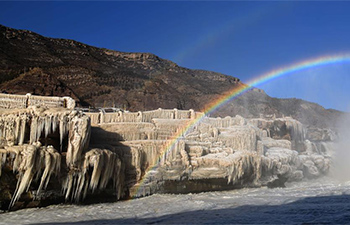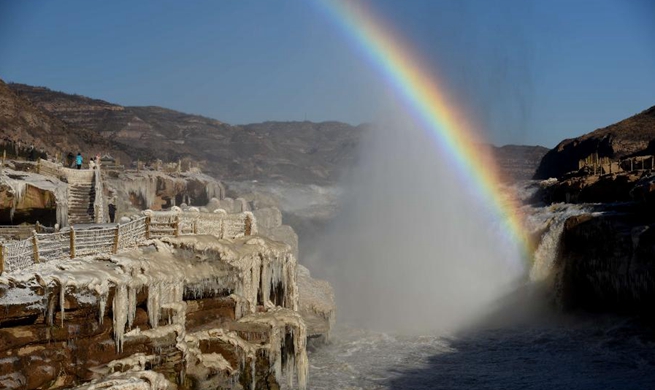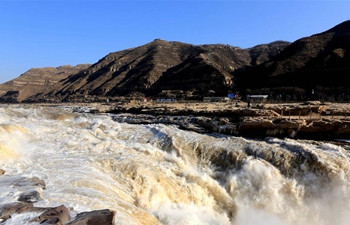LOS ANGELES, Dec. 17 (Xinhua) -- Loss of water from the rocks of California's Sierra Nevada caused the mountain range to grow nearly an inch (24 millimeters) in height during recent drought years from October 2011 to October 2015, a new research from the U.S. National Aeronautics and Space Administration (NASA) finds.
"This suggests that the solid Earth has a greater capacity to store water than previously thought," research scientist Donald Argus of NASA's Jet Propulsion Laboratory (JPL) was quoted as saying in a news release.
Significantly more water was lost from cracks and soil within fractured mountain rock during drought and gained during heavy precipitation than hydrology models show, according to the new study, detailed in a paper published recently in the Journal of Geophysical Research: Solid Earth.
In the two following years of more abundant snow and rainfall, the mountains have regained about half as much water in the rock as they had lost in the preceding drought and have fallen about half an inch (12 millimeters) in height.
Researchers used advanced data-processing techniques on data from 1,300 GPS stations throughout the mountains of California, Oregon and Washington, collected from 2006 through October 2017, to closely observe how its elevation changed during the drought.
The team found that 10.8 cubic miles of water were lost from within fractured mountain rock in 2011-2015. For comparison, the amount is 45 times as much water as Los Angeles currently uses in a year.
JPL water scientist Jay Famiglietti, who collaborated on the research, said the finding solves a mystery for hydrologists. "One of the major unknowns in mountain hydrology is what happens below the soil. How much snowmelt percolates through fractured rock straight downward into the core of the mountain? This is one of the key topics that we addressed in our study."
Famiglietti said the techniques developed for this study will allow scientists to begin exploring other questions about mountain groundwater. "What does the water table look like within mountain ranges? Is there a significant amount of groundwater stored within mountains? We just don't have answers yet, and this study identities a set of new tools to help us get them."

















